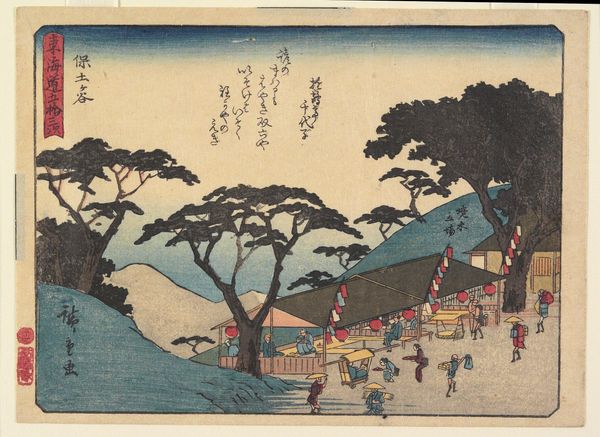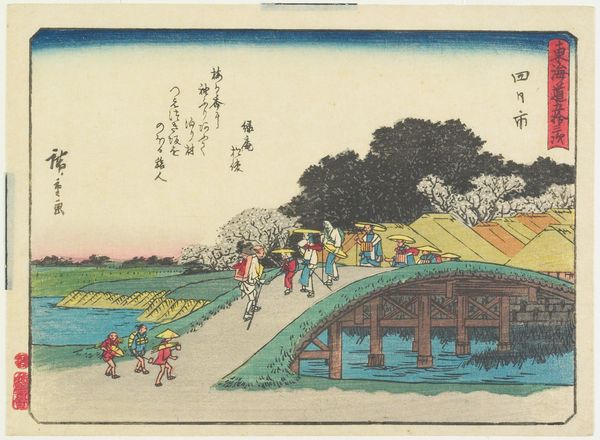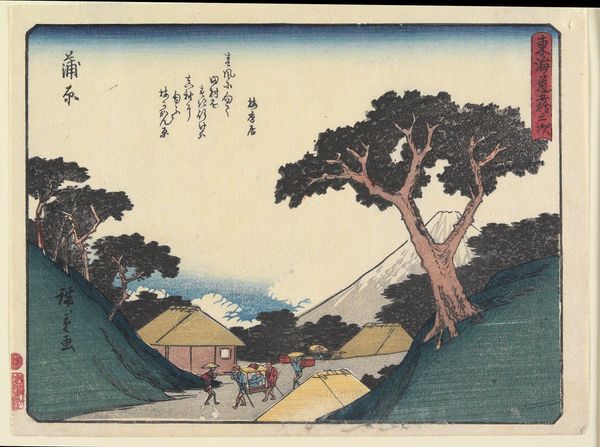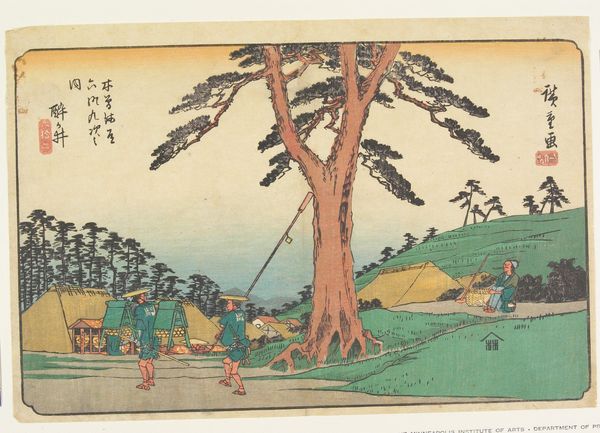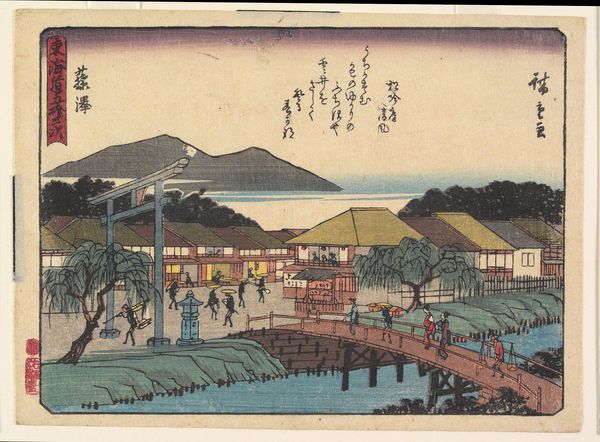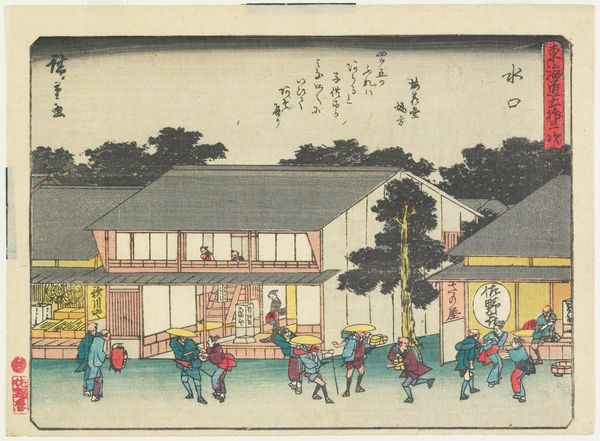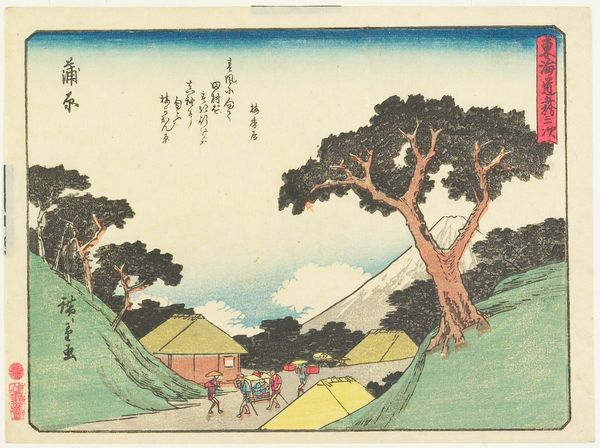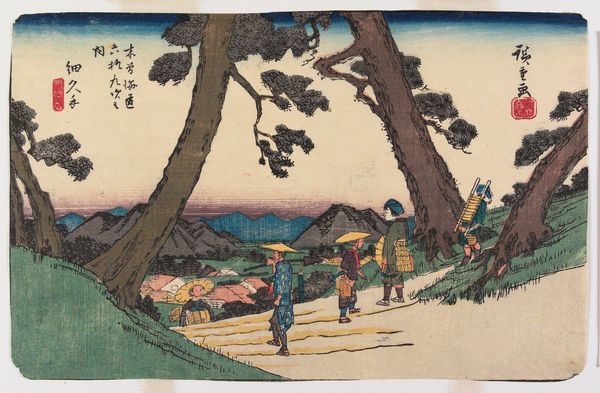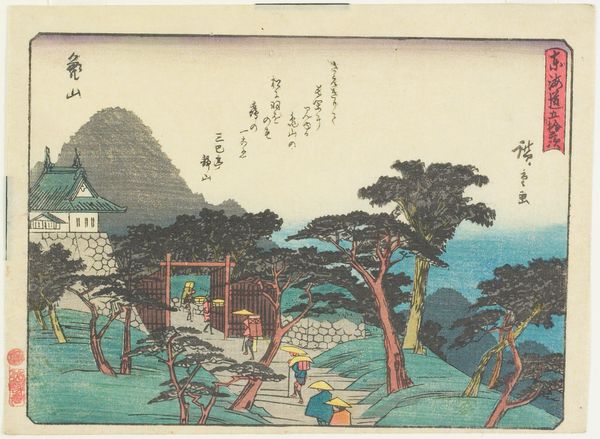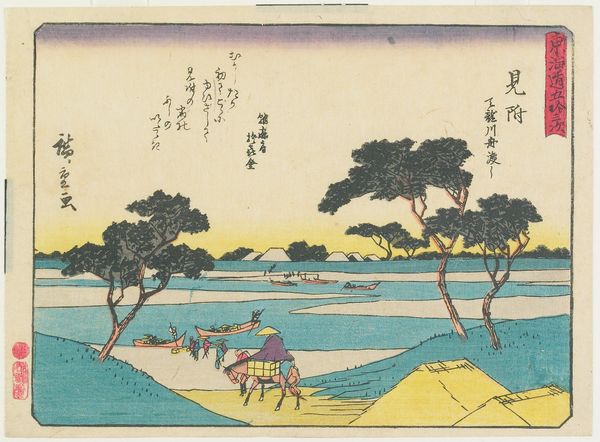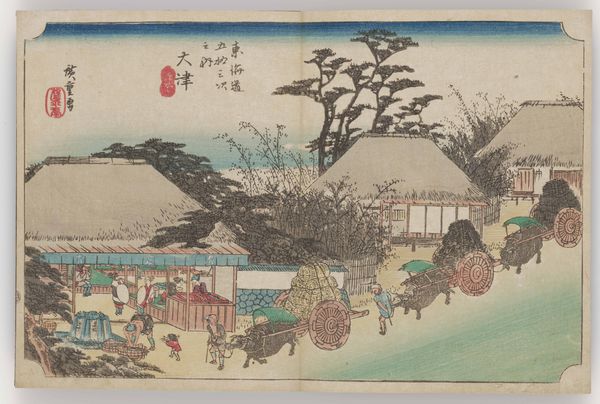
print, ink, woodblock-print
# print
#
landscape
#
ukiyo-e
#
japan
#
personal sketchbook
#
ink
#
woodblock-print
Dimensions: 7 11/16 x 12 1/2 in. (19.6 x 31.7 cm) (image)8 7/8 x 13 5/8 in. (22.6 x 34.6 cm) (sheet)
Copyright: Public Domain
Curator: We’re looking at “View of Sarugababa Plateau,” a woodblock print by Utagawa Hiroshige, dating from around 1841-1842. Editor: It has such a placid, almost idealized atmosphere. The pastel colors, the tiny figures... it evokes a sense of peace, maybe even a touch of romanticism, don't you think? Curator: Yes, that’s a common perception of ukiyo-e prints, which often served as tourist souvenirs. This particular work is part of the “Fifty-three Stations of the Tōkaidō” series. The Tōkaidō being the main road connecting Edo, now Tokyo, with Kyoto, the imperial capital. It highlights the station of Futagawa. Editor: So, this idyllic scene hides a very deliberate depiction of commercialism and travel culture, that shaped perceptions about places within and beyond Japan. The travelers with their broad hats, the small restaurant... What seems peaceful is a cog in the wheel of economy. Curator: Precisely. The composition guides our eye toward the activities. See how the artist uses linear perspective? And note the clever placement of figures to direct our gaze deeper into the landscape. Even the choice of vantage point, slightly elevated, provides a controlled view. It’s all orchestrated to create a specific impression of Japan. Editor: That control you mention speaks to something larger: the deliberate framing of Japanese identity, which played an important role when Japan started engaging with the West in the 19th century. This print isn't just a record of a place; it's part of a narrative. What is left out and what’s centered are decisions loaded with social and political implications. Curator: Definitely. Hiroshige's skill wasn't just in depicting a place, but in crafting a vision of it, appealing to both domestic consumers and, eventually, a global audience eager for glimpses of an "exotic" Japan. Editor: Reflecting on it, the beauty we initially perceived takes on another layer of meaning, colored by the economic and socio-political contexts of its time. Curator: Absolutely. Art serves many purposes, and the narratives surrounding it often shift over time.
Comments
No comments
Be the first to comment and join the conversation on the ultimate creative platform.

